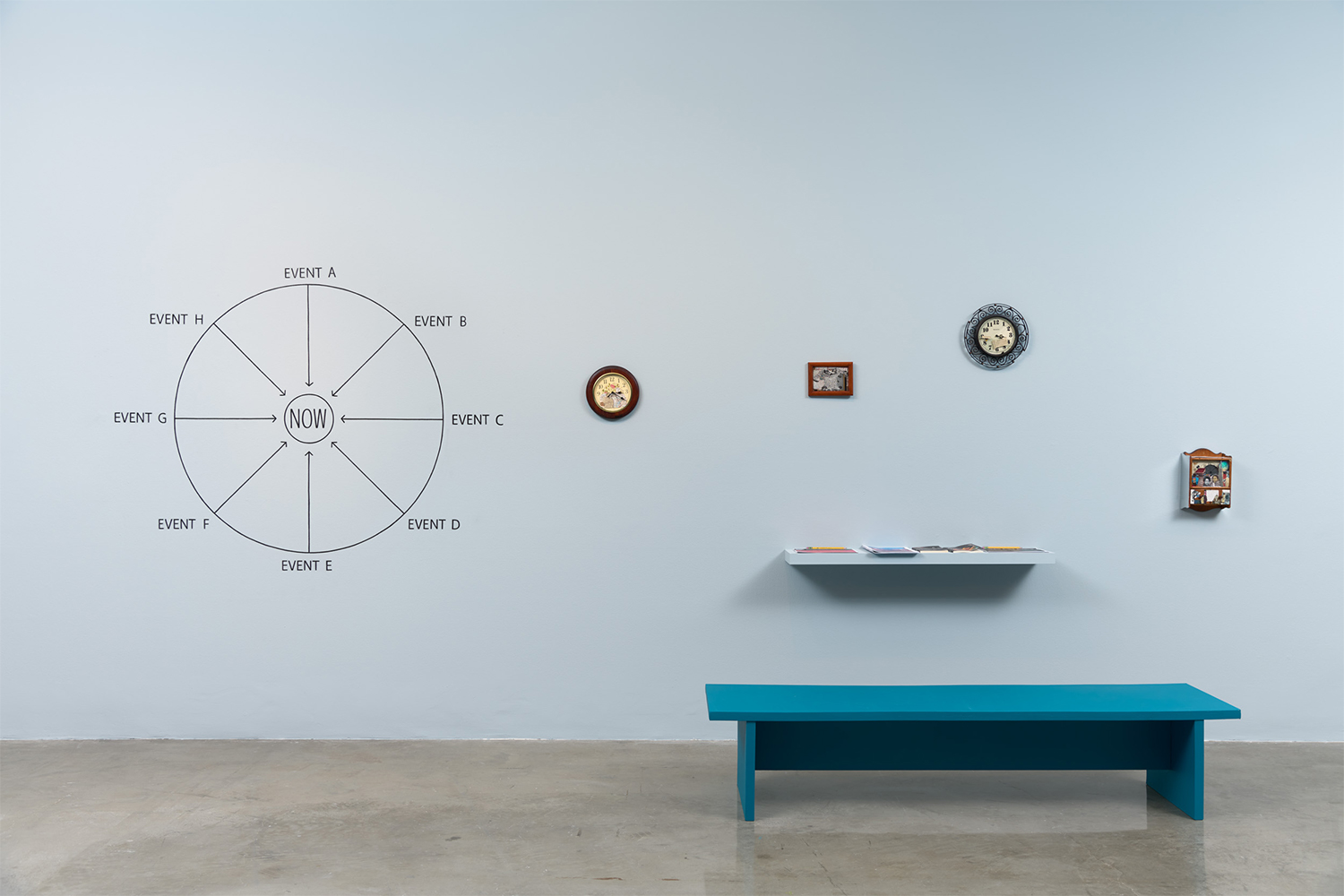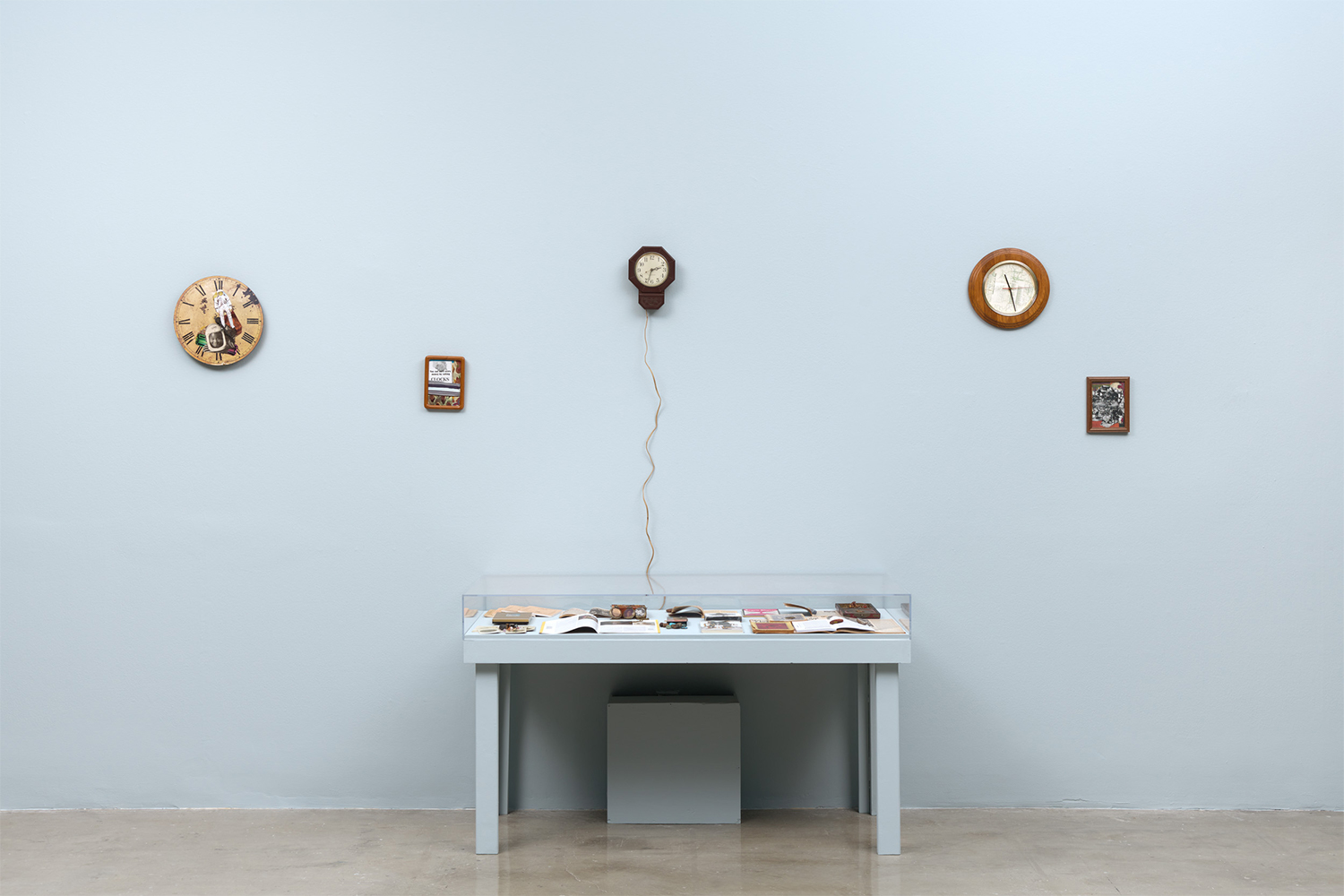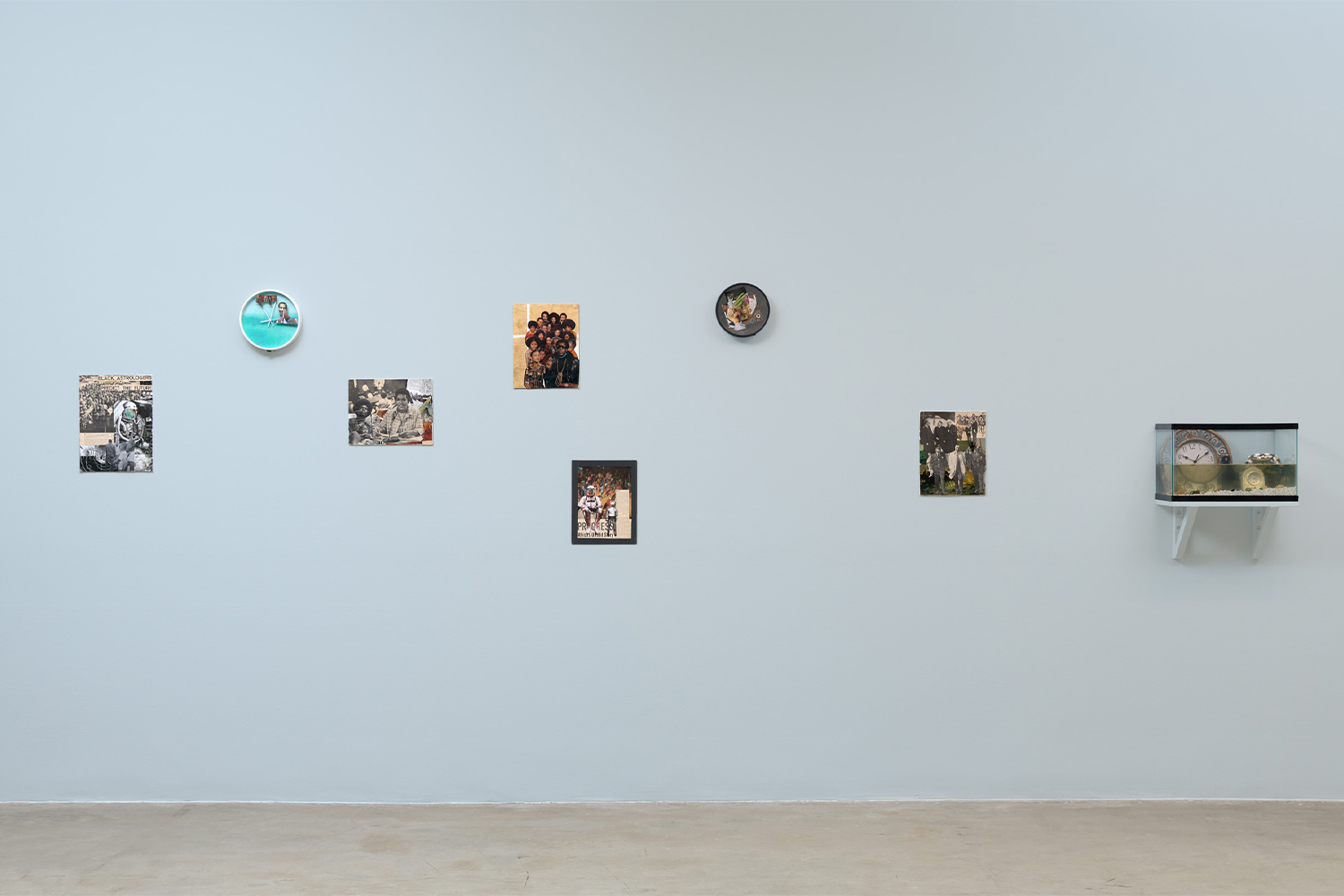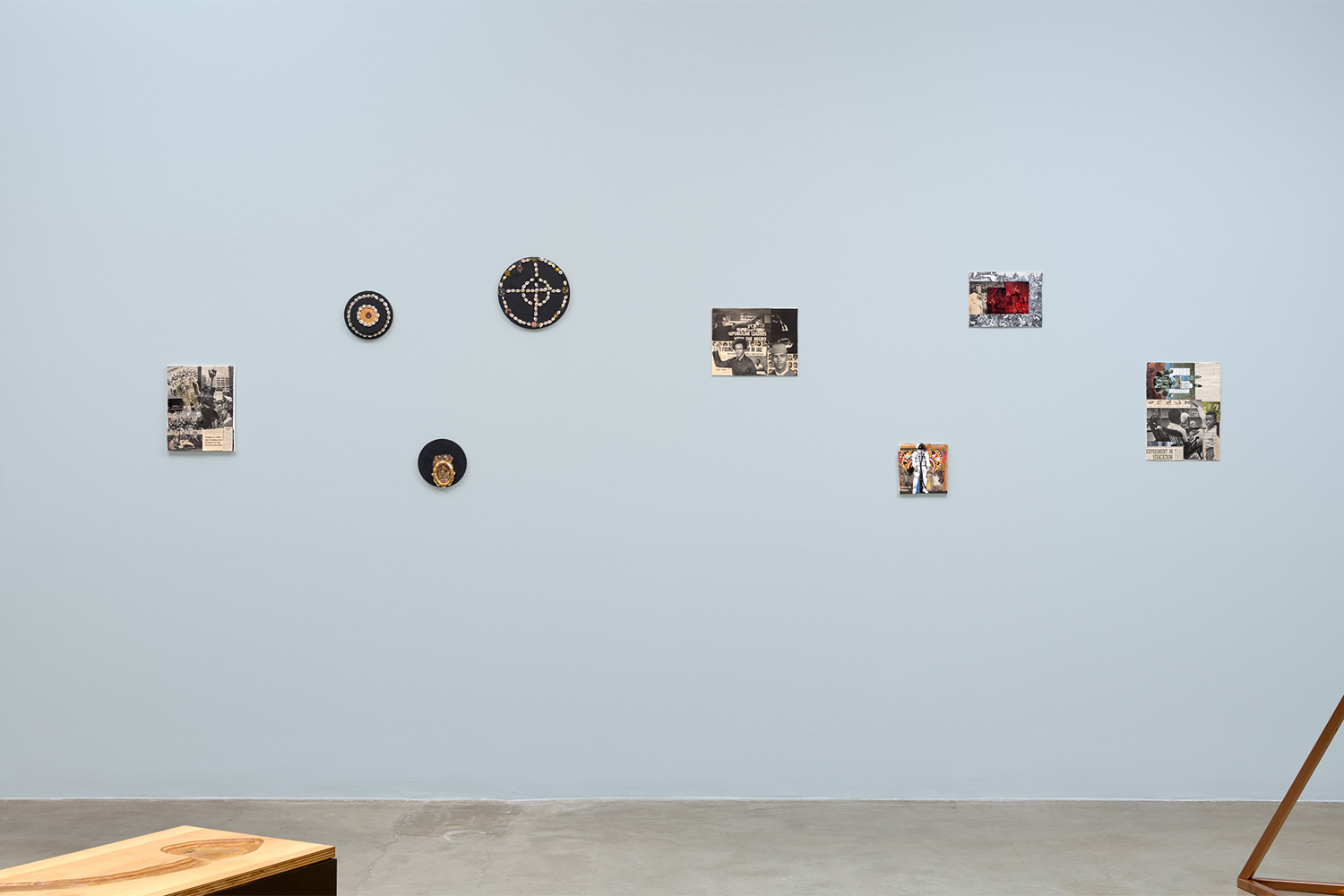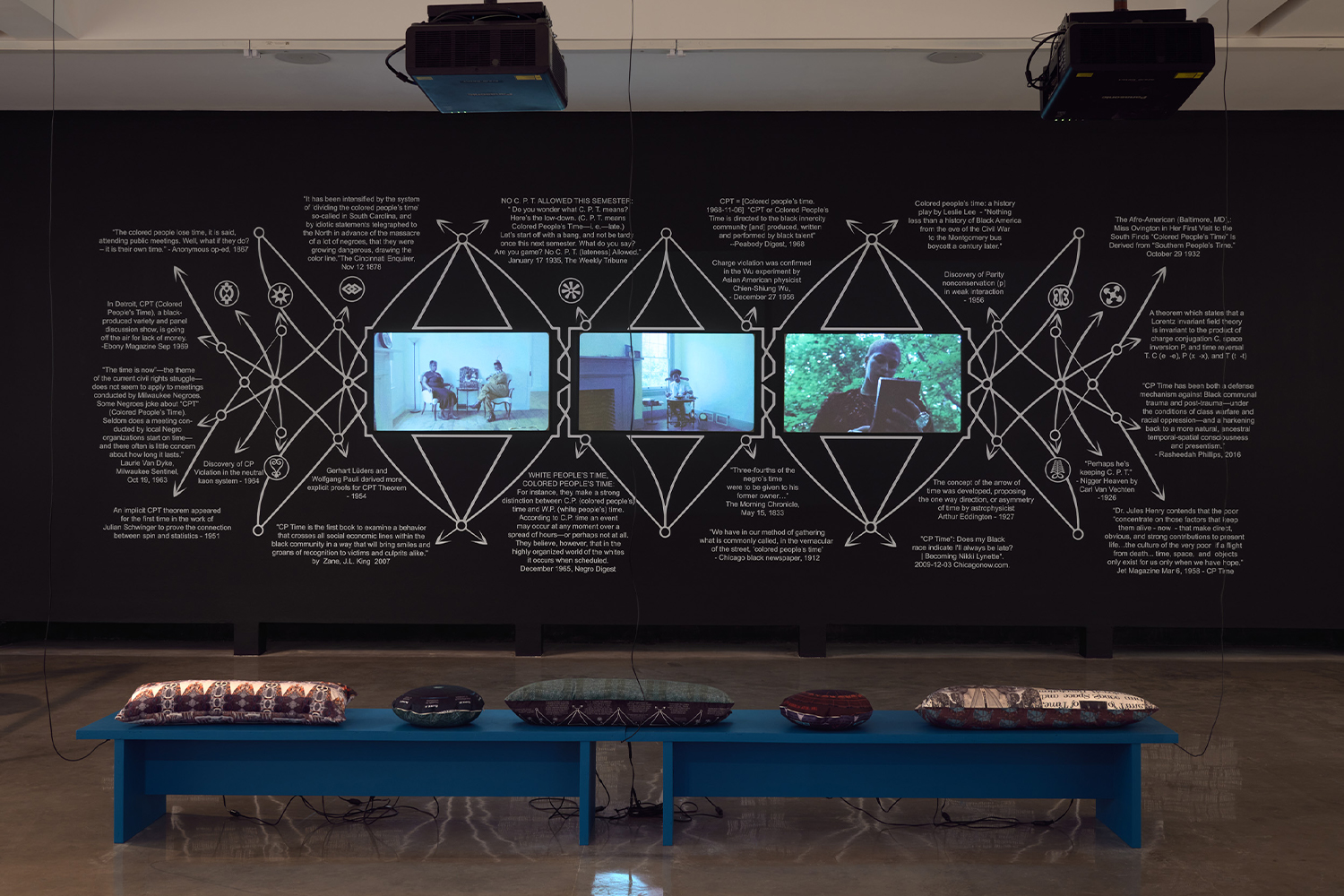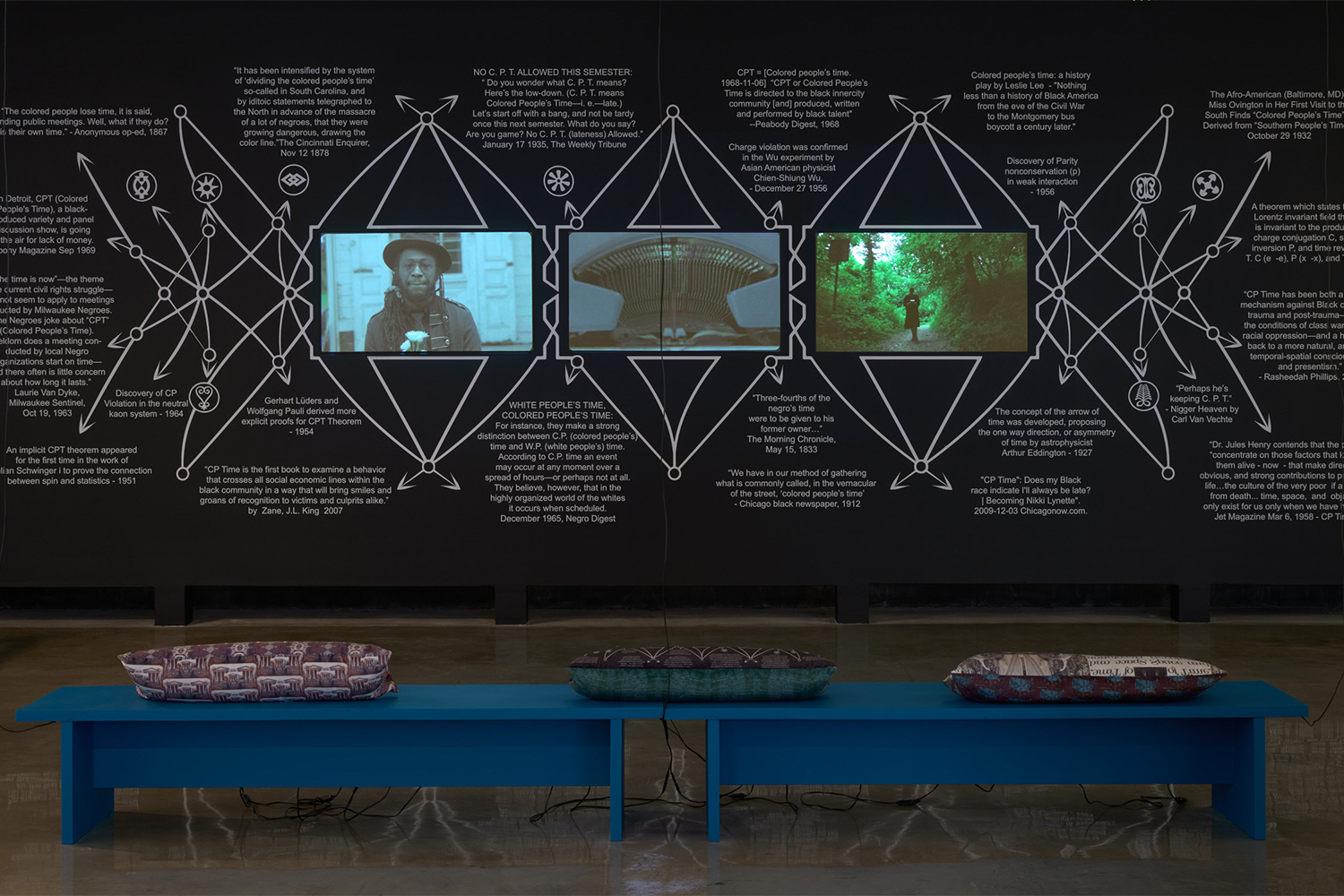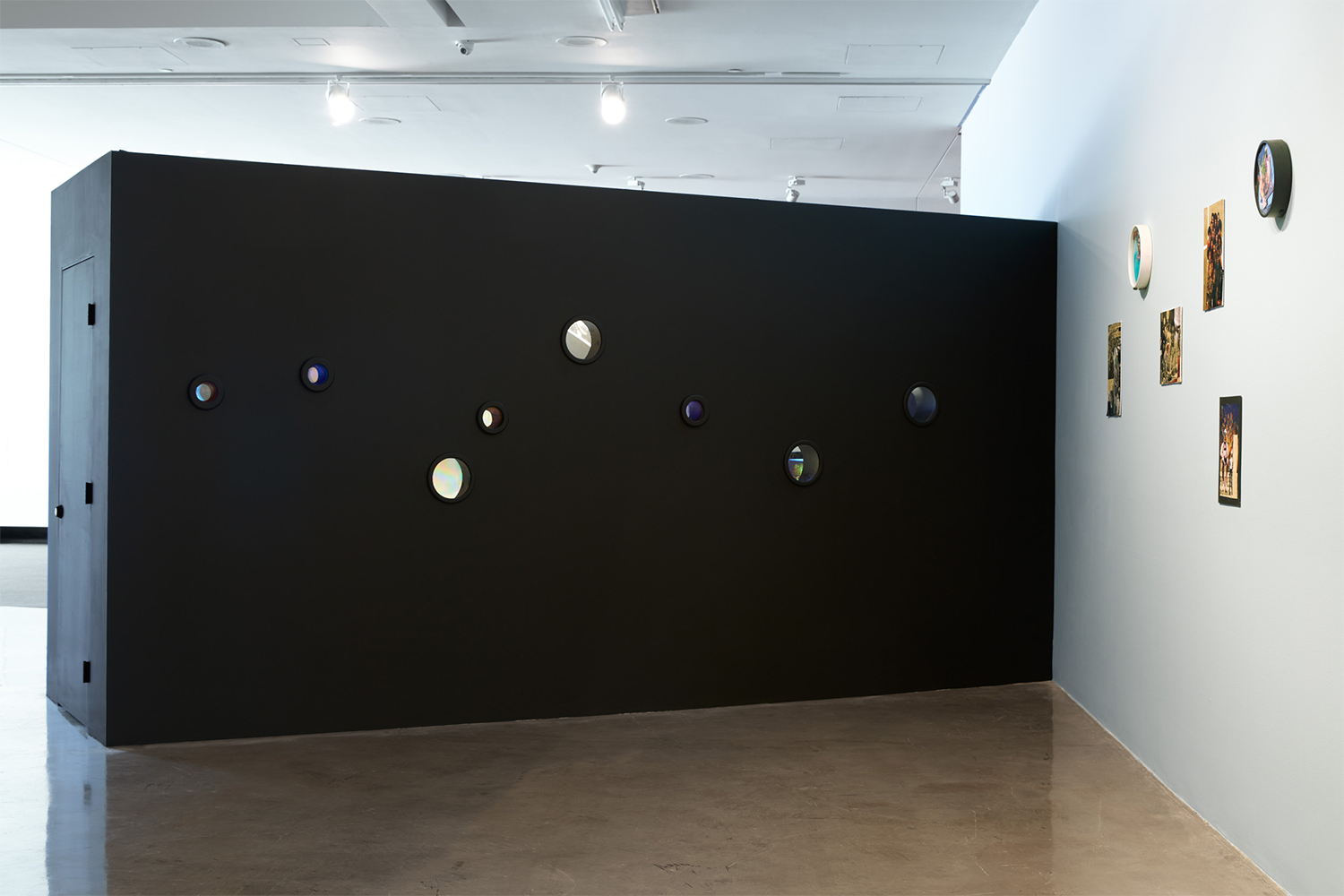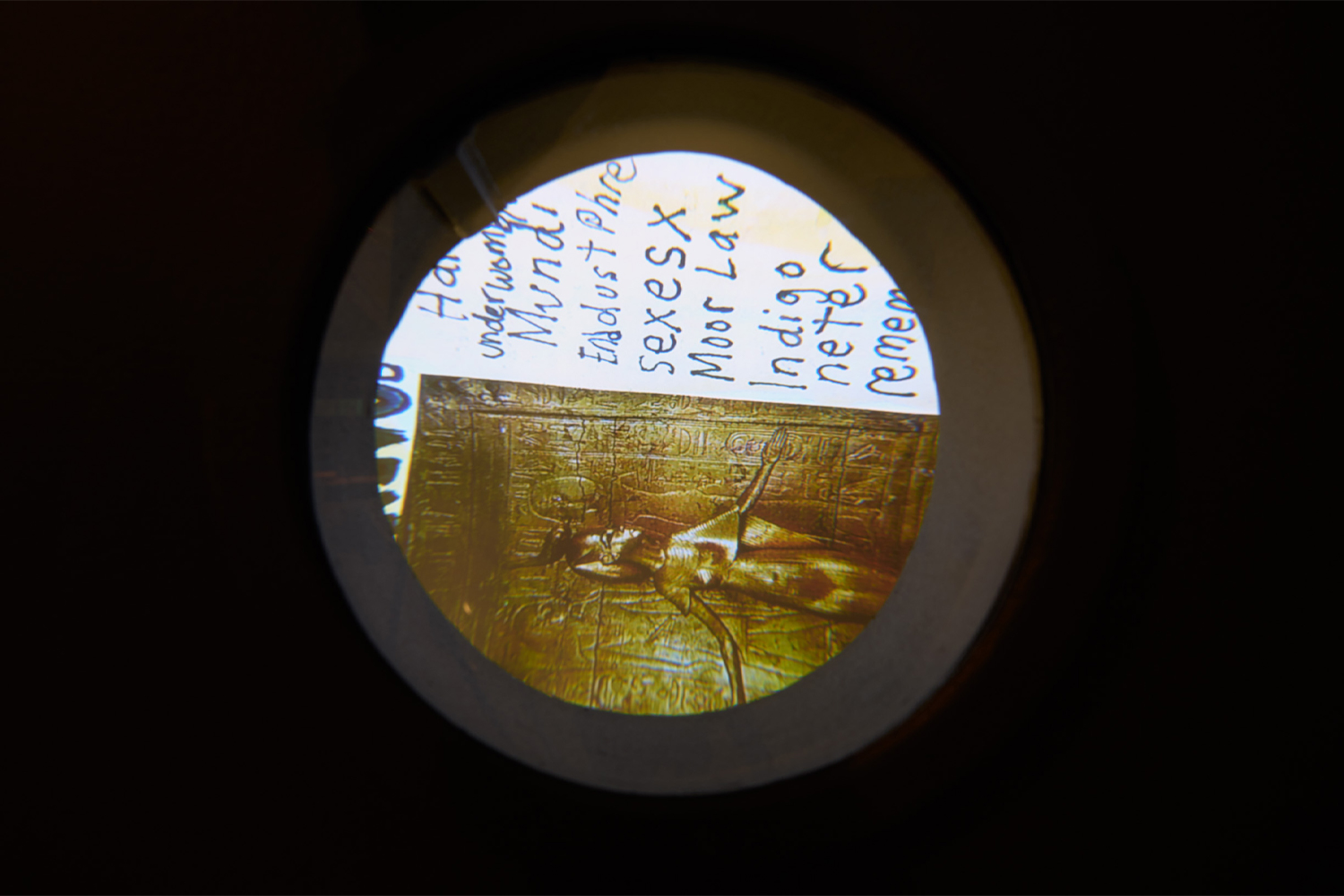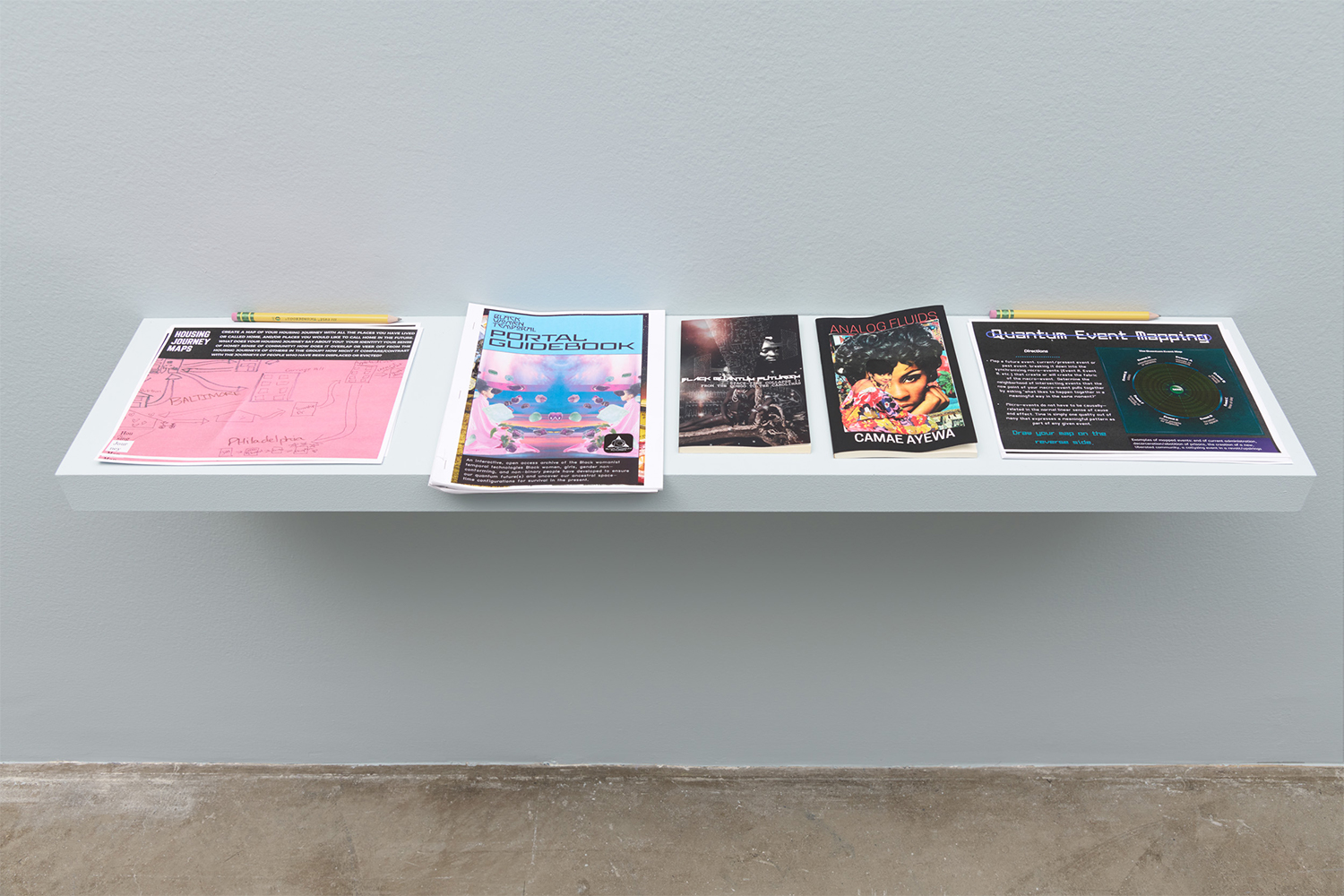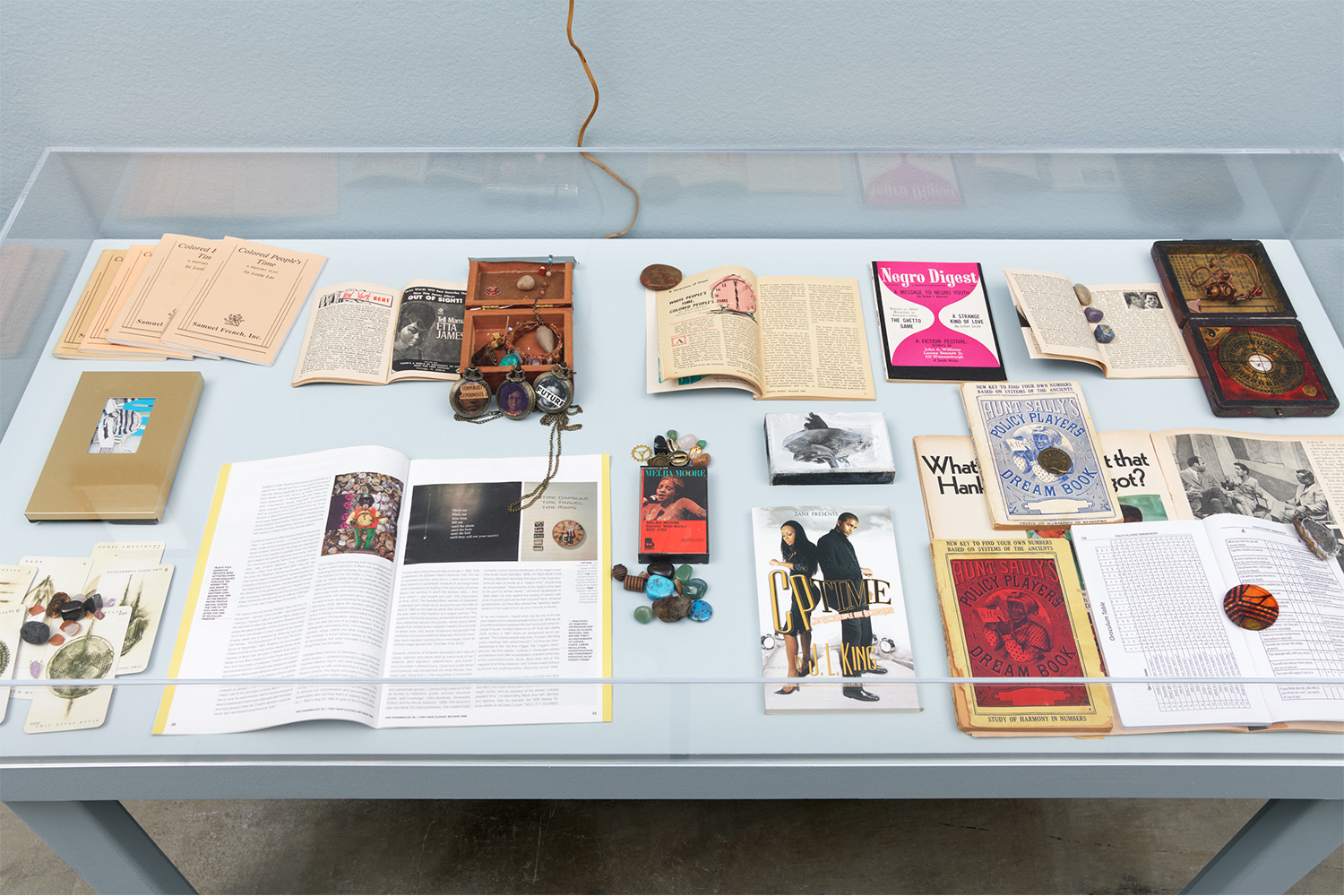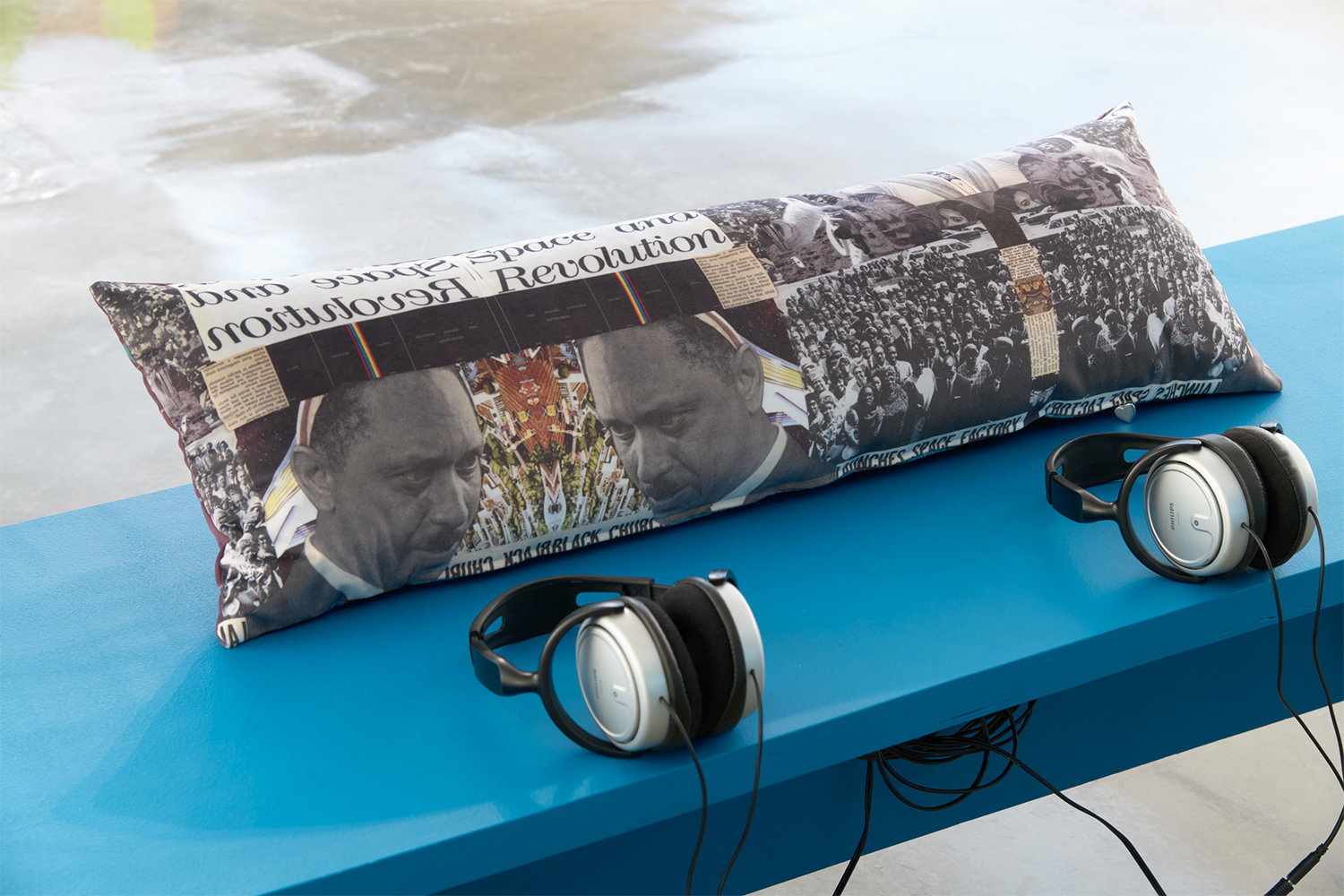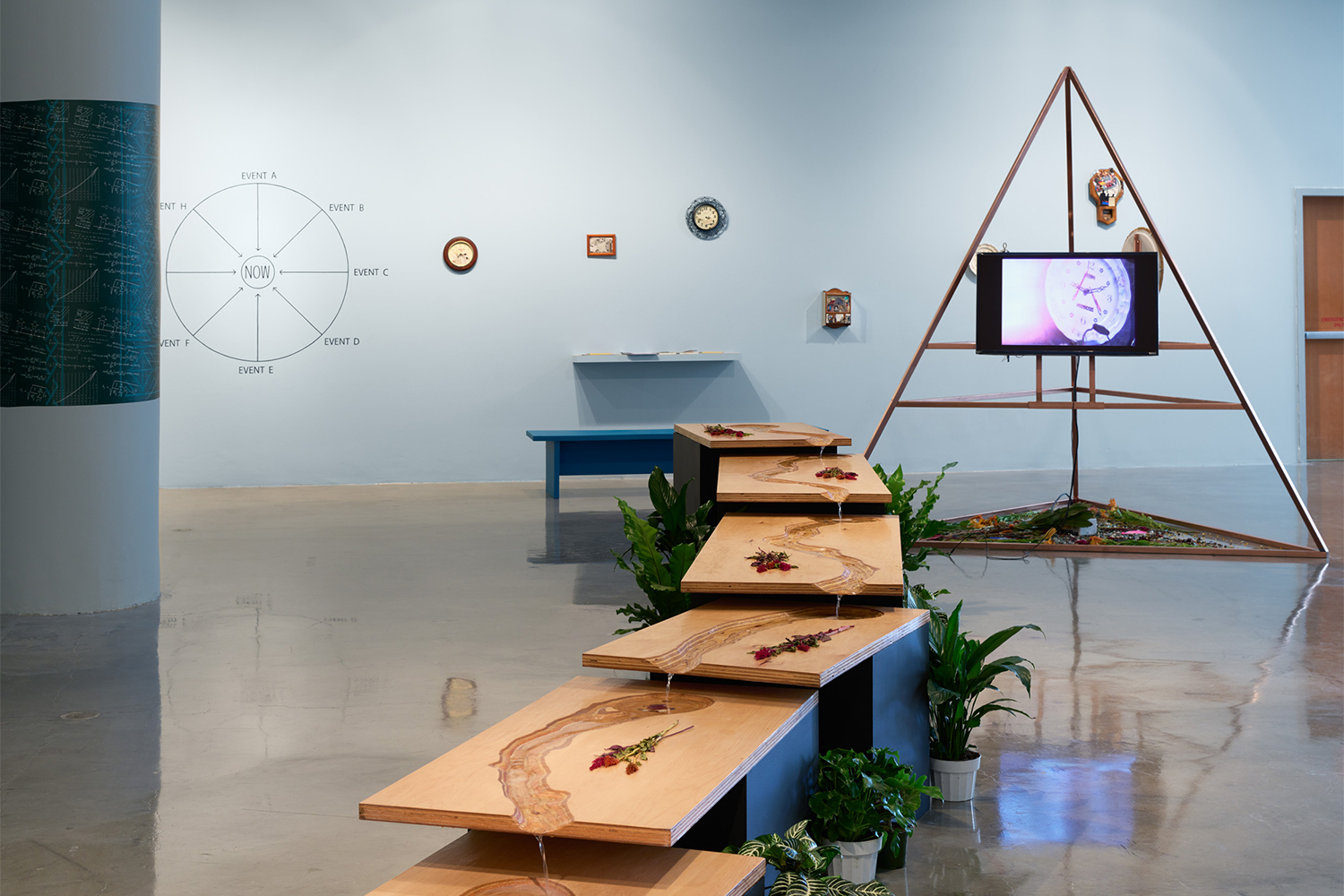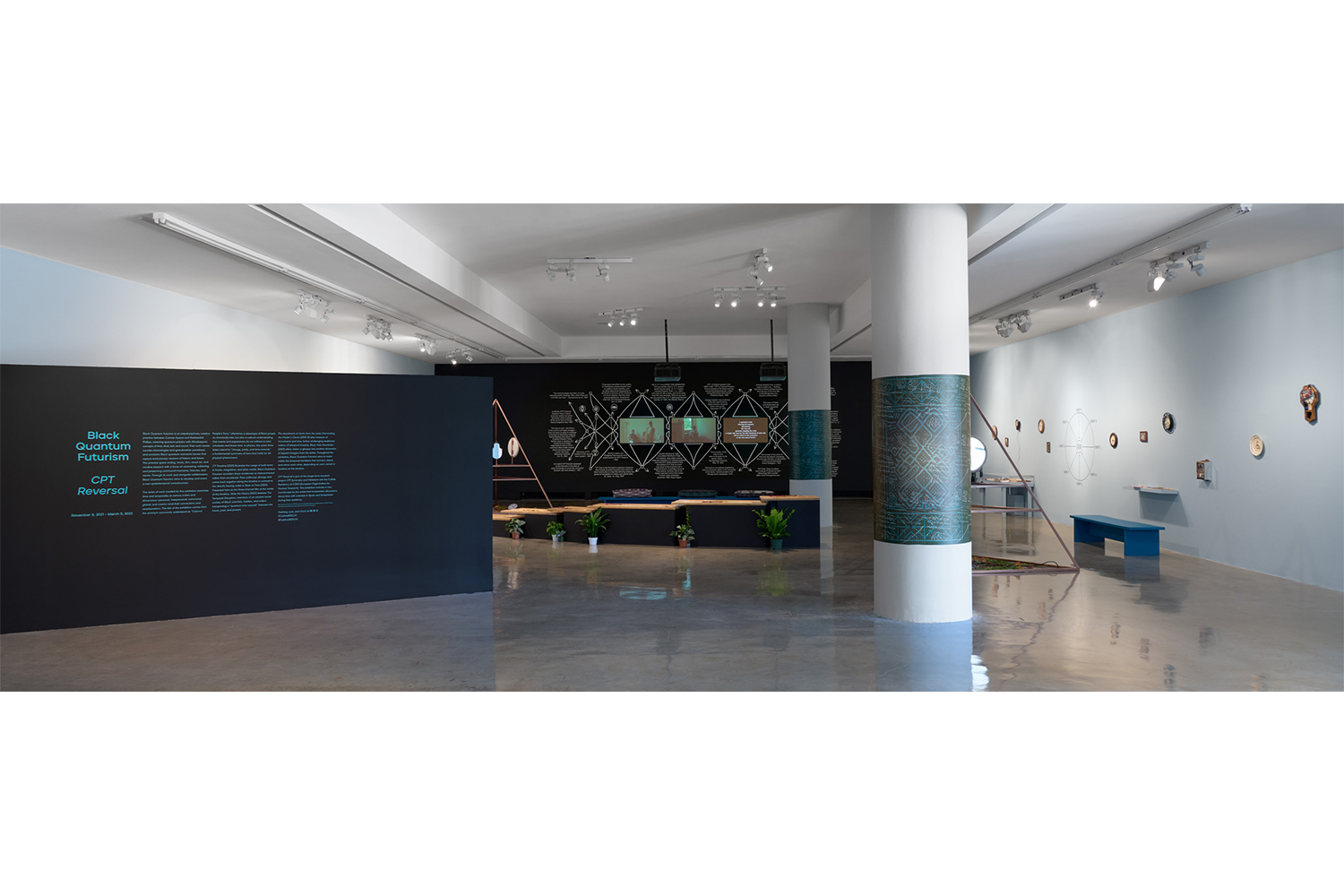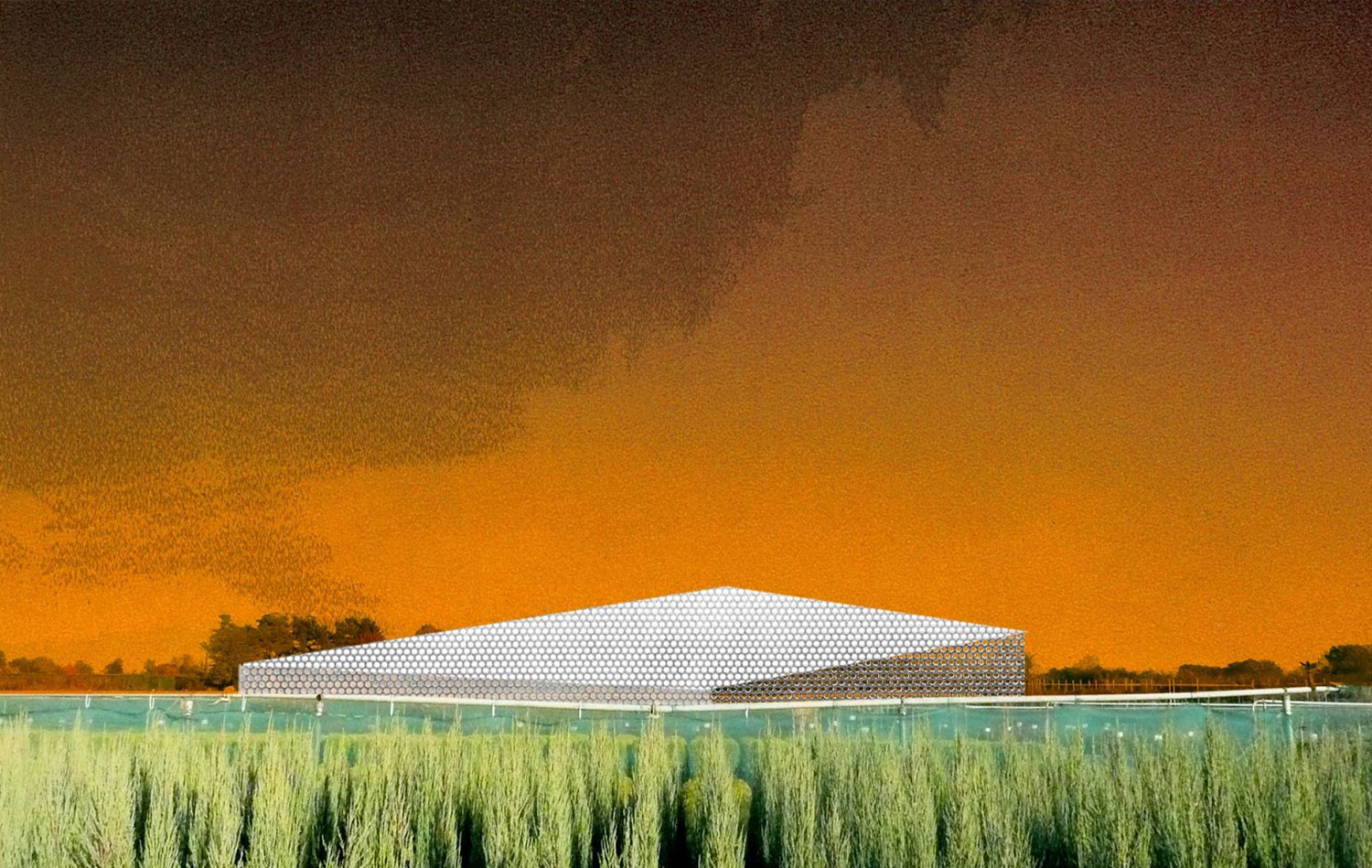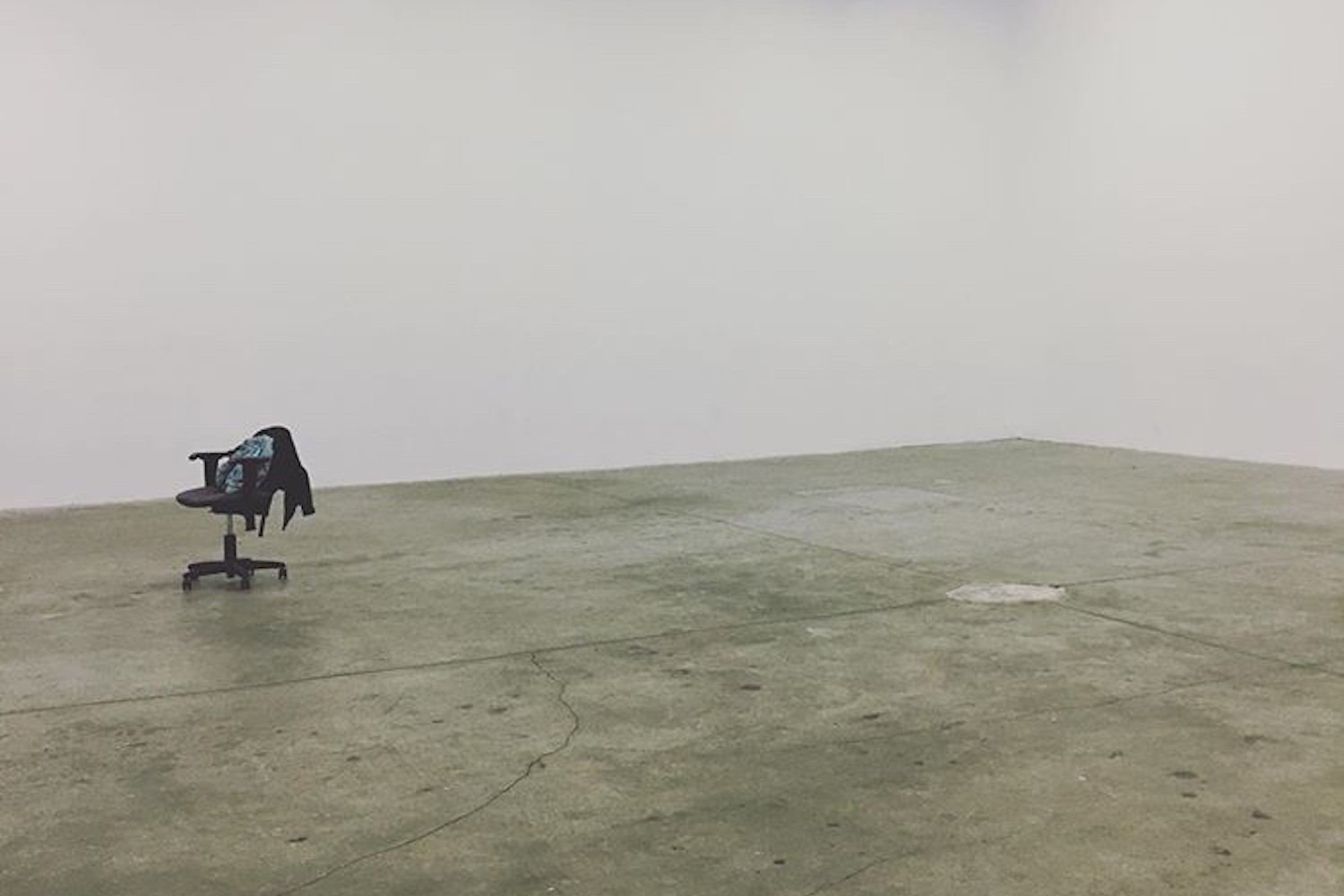There has never been a more opportune time to think about concepts of the “future” than our present moment — a strange in-between time in which we are still reeling from the fracturing of our pre-2020 lived realities and not yet at ease enough to visualize the possibilities ahead. This metaphysical-epistemological juncture, situated at the seam, is perhaps the best point of entry into “CPT Reversal,” the sprawling exhibition at REDCAT by Black Quantum Futurism. The articulation of the collaborative practice of Camae Ayewa and Rasheedah Phillips, the show is an unruly cosmology that unfolds rhizomatically across a wide variety of objects, including sculpture, collage, installation, and video, as well as research, theory, and writing that bridges a wide variety of disciplines from physics to historiography. It is a tangled experience made all the more so by its sensorial complexity, with soundscape elements adding a contrapuntal register — and that’s precisely the point.
The animating principle of the undertaking stems from the duo’s research project titled “CPT Symmetry and Violations,” which received the Collide Award in 2020. In physics, CPT stands for “change, parity, and time reversal.” As I understand it (and I am far from a physicist), this theorem encompasses a fundamental principle of symmetry that governs all physical laws and phenomena: matter and antimatter, positron and neutron. It is at its core a principle of balance — a mirror image of our universe, a negative of our reality that keeps the whole thing in harmonious stasis. It follows that if a stray particle violates this sacred balance, the whole system comes into jeopardy and risks collapse (see Spider-Man: Into the Spider-Verse and Interstellar as apt speculative dramatizations of this conundrum).
The artists play on this acronym with the common American colloquialism “colored people’s time” — a phrase used as early as 1912 to refer to African Americans as chronically late (along with the implicit stereotypical associations of laziness, inattentiveness, and a lax work ethic). The concept is ingeniously repurposed here to map out not “lateness” but an out-of-sync-ness with a dominant temporality that has been largely defined by hegemonic forces to suit their purposes and uphold their intrinsic power structures.
The exhibition expertly mines this idea in a strategic nonlinear fashion — conjuring fragments of histories through archival materials and juxtaposing them against flights of fiction as well as rigorous research findings. The whole functions in an almost musical fashion — a cacophony defined by various motifs that come forward and then recede. One of the most discernable of these is the image of a clock, which appears throughout the exhibition in various incarnations, including the collages Memory Works 000 (2021) and BlackWor*ship (2018), and the aquarium sculpture Dismantling the Master’s Clocks (2015–21), which presents curio mantle clocks in a watery suspension. The cumulative picture is profound in its simplicity: if fundamental physics influence the way we experience and measure “time” in everyday reality, how can a traumatic diasporic experience inhabit and/or adhere to the same timeline as that of its oppressors?
The vicissitudes of this proposition brush up against strands of Afropessimist thought, but the artists also find therein alternate possibilities — a mirror reality, if you will, that is not beholden to the exigencies of colonial temporalities. This is a space of incredible imaginative potential that is explored in the three-channel film Write No History (2021). It focuses on the Temporal Disruptors, an ancient secret society of Black cognoscenti, from scientists and healers to writers, who harness “a quantum time capsule” between past, present, and future. They are stray radicals who move through time and space, signaling both its collapse but also its reconstitution.
The show explores the possibilities of each thread with equal rigor — balancing the weight of history with the joy of escaping its grasp. This chiasmic movement keeps the exhibition in perpetual motion: a field of animated particles attempting to find new configurations and spatial orientations. It is a poetic flux that resonates with theory as well as speculative fiction, like the writings of N. K. Jemisin. The lack of formal and conceptual resolution makes the experience all the more poignant, leaving us with a kind of leaden openness to currents and forces apprehensible on multiple registers and dimensions of experience.

